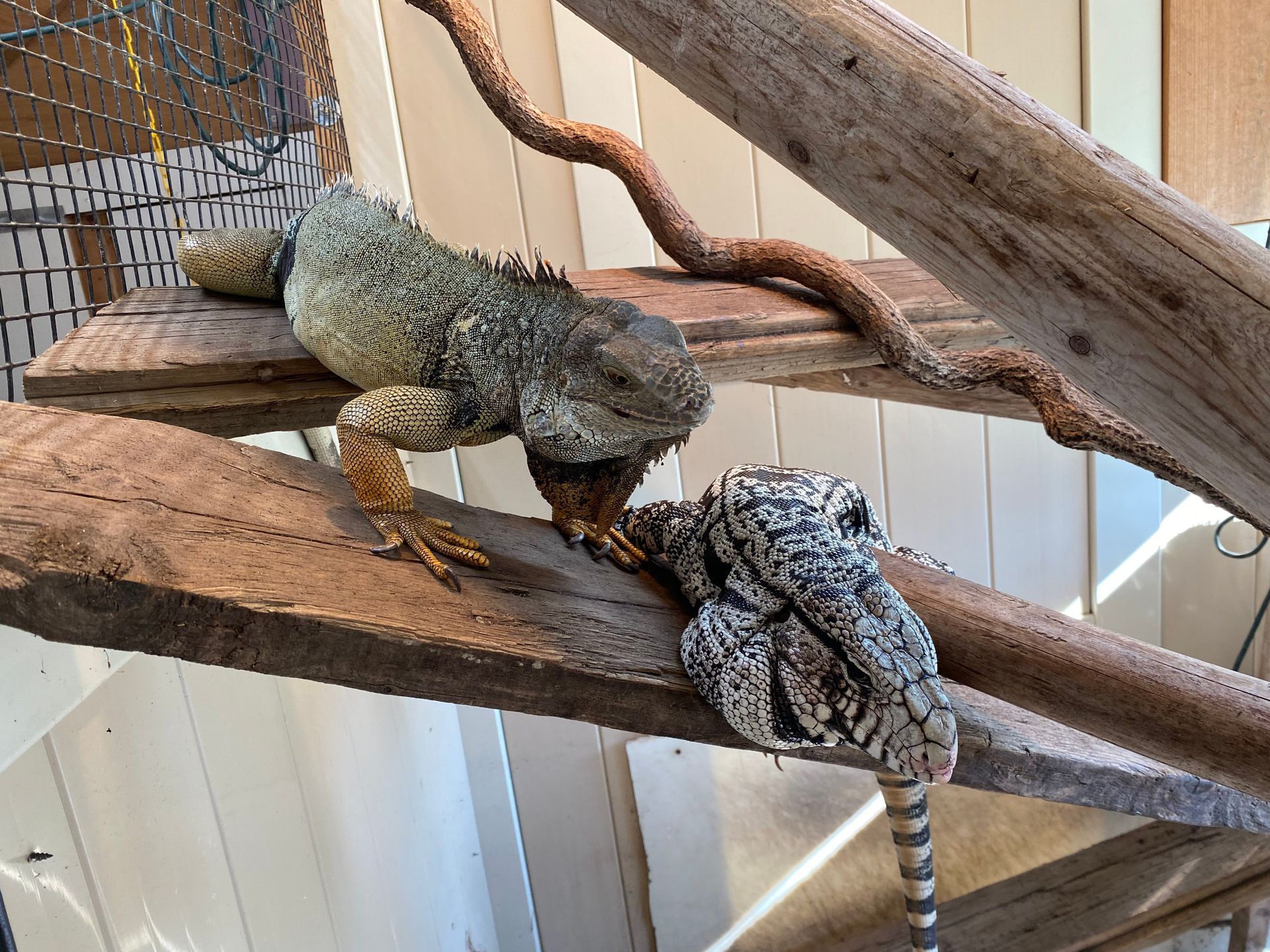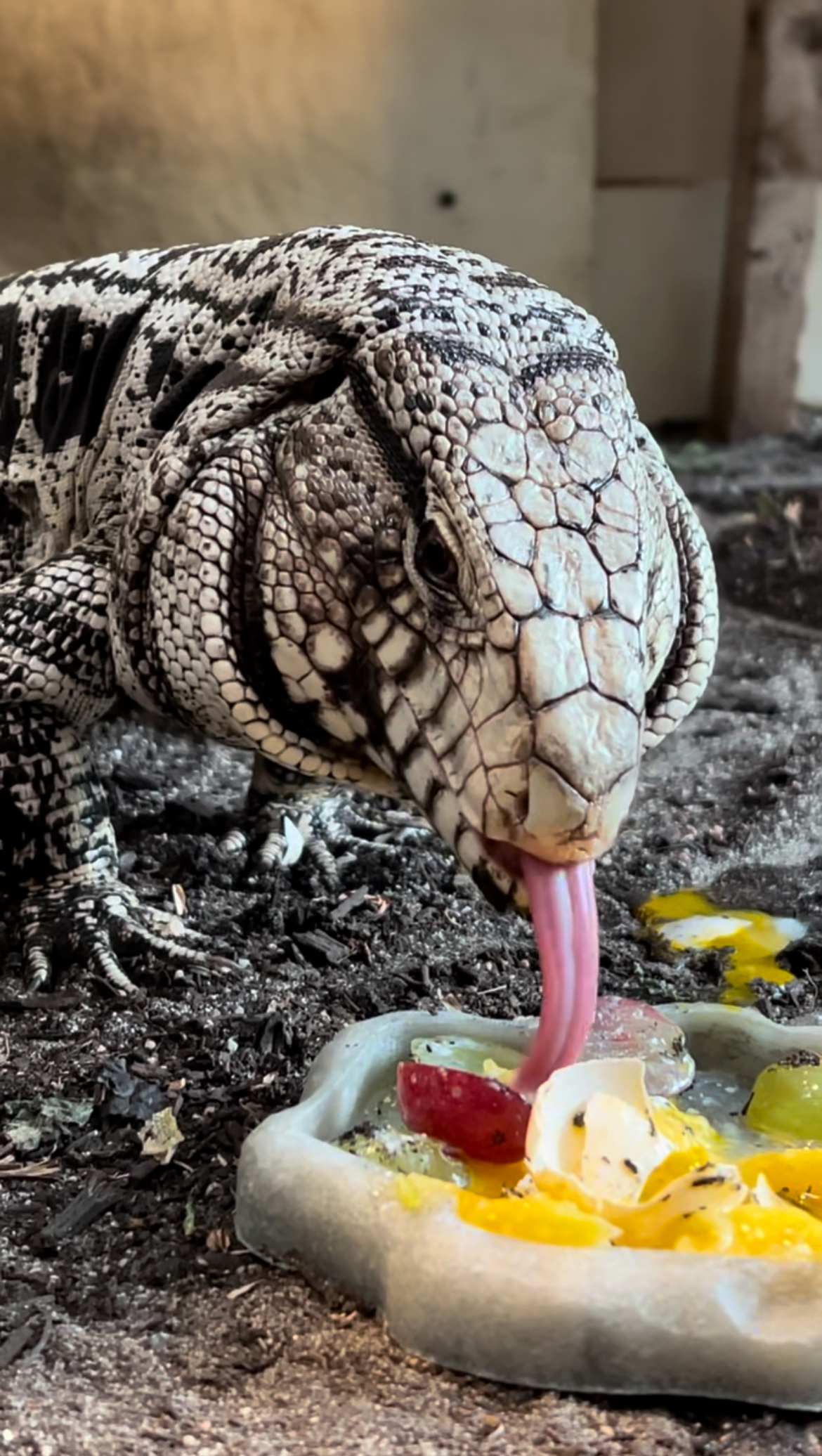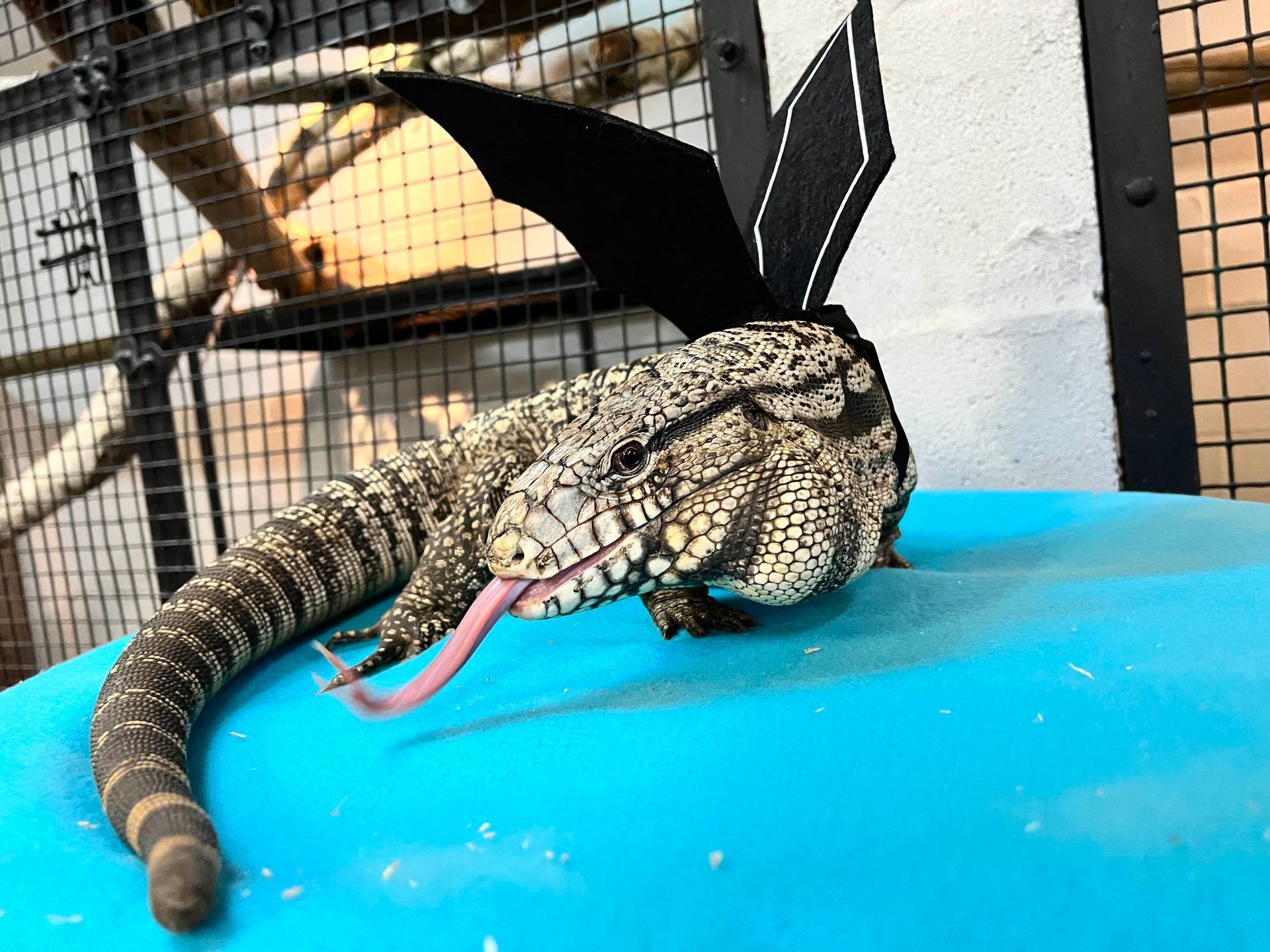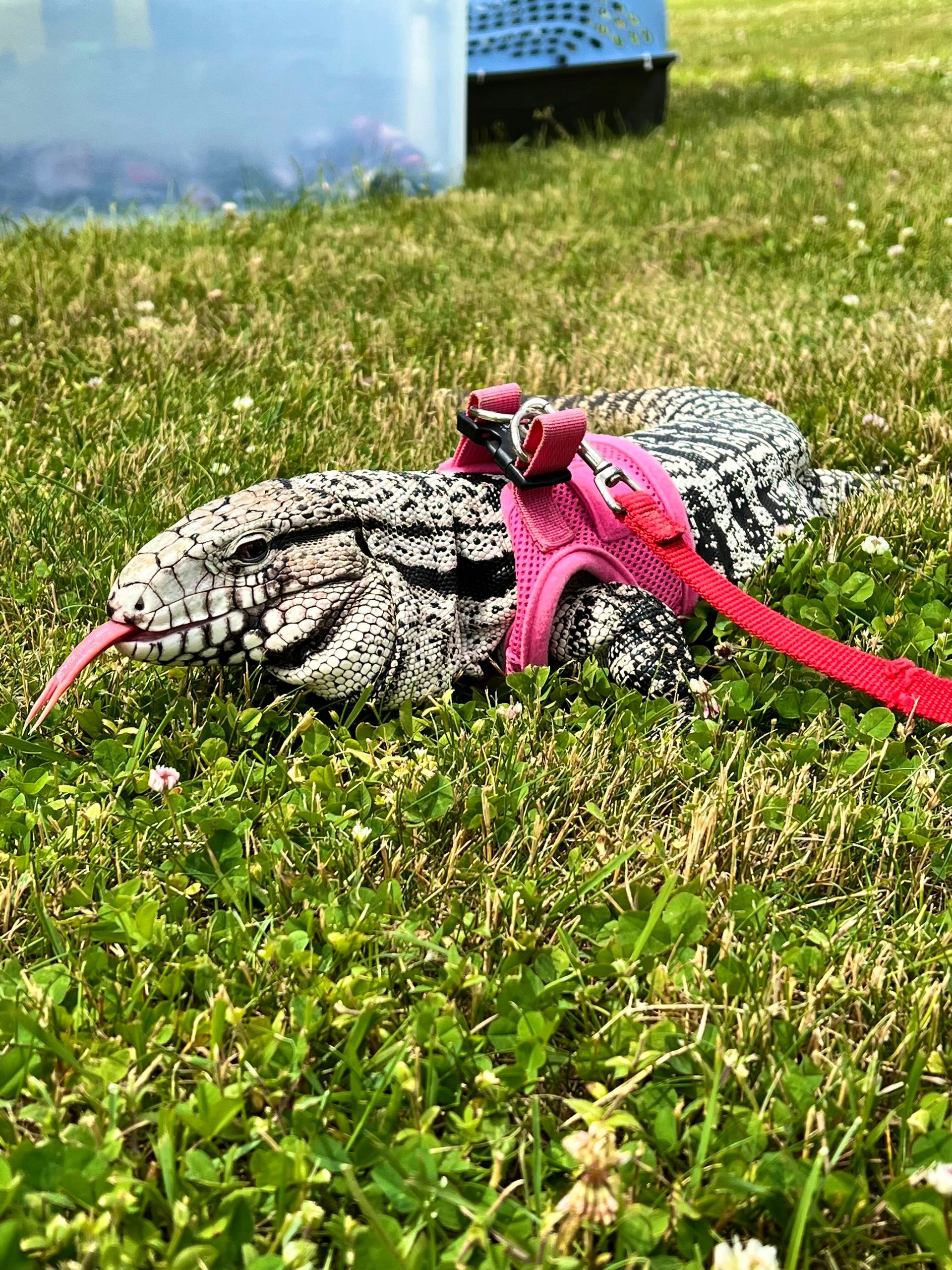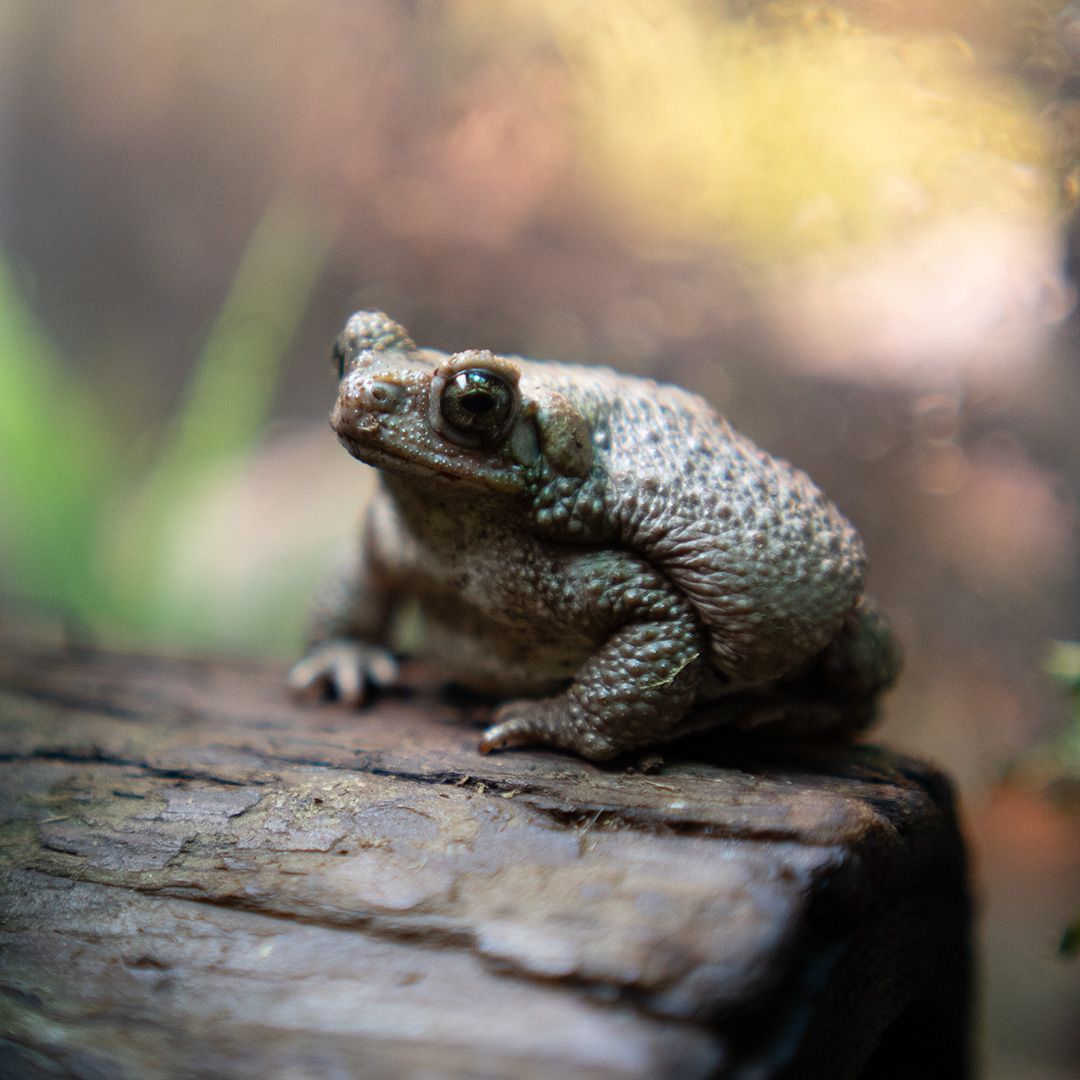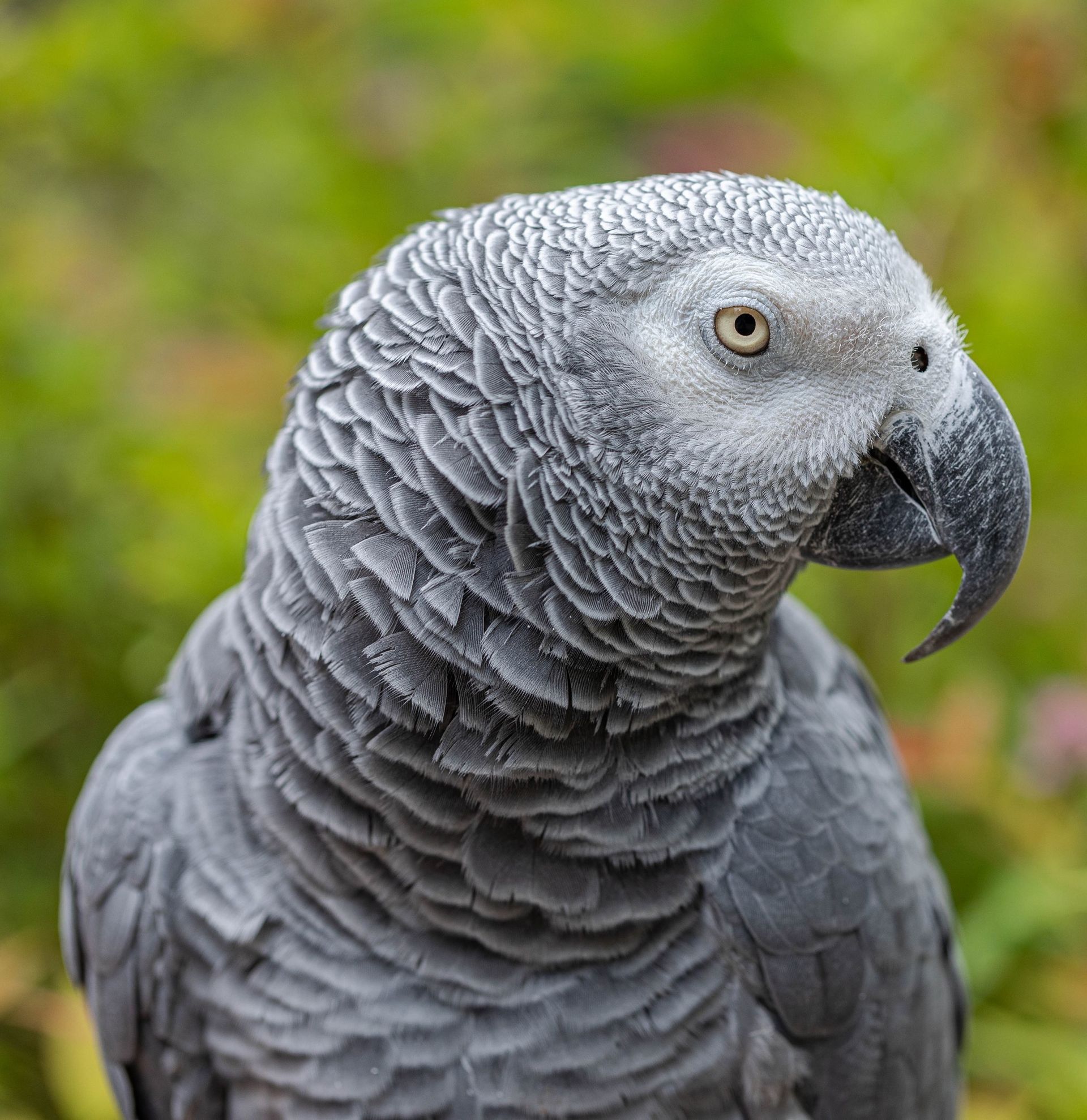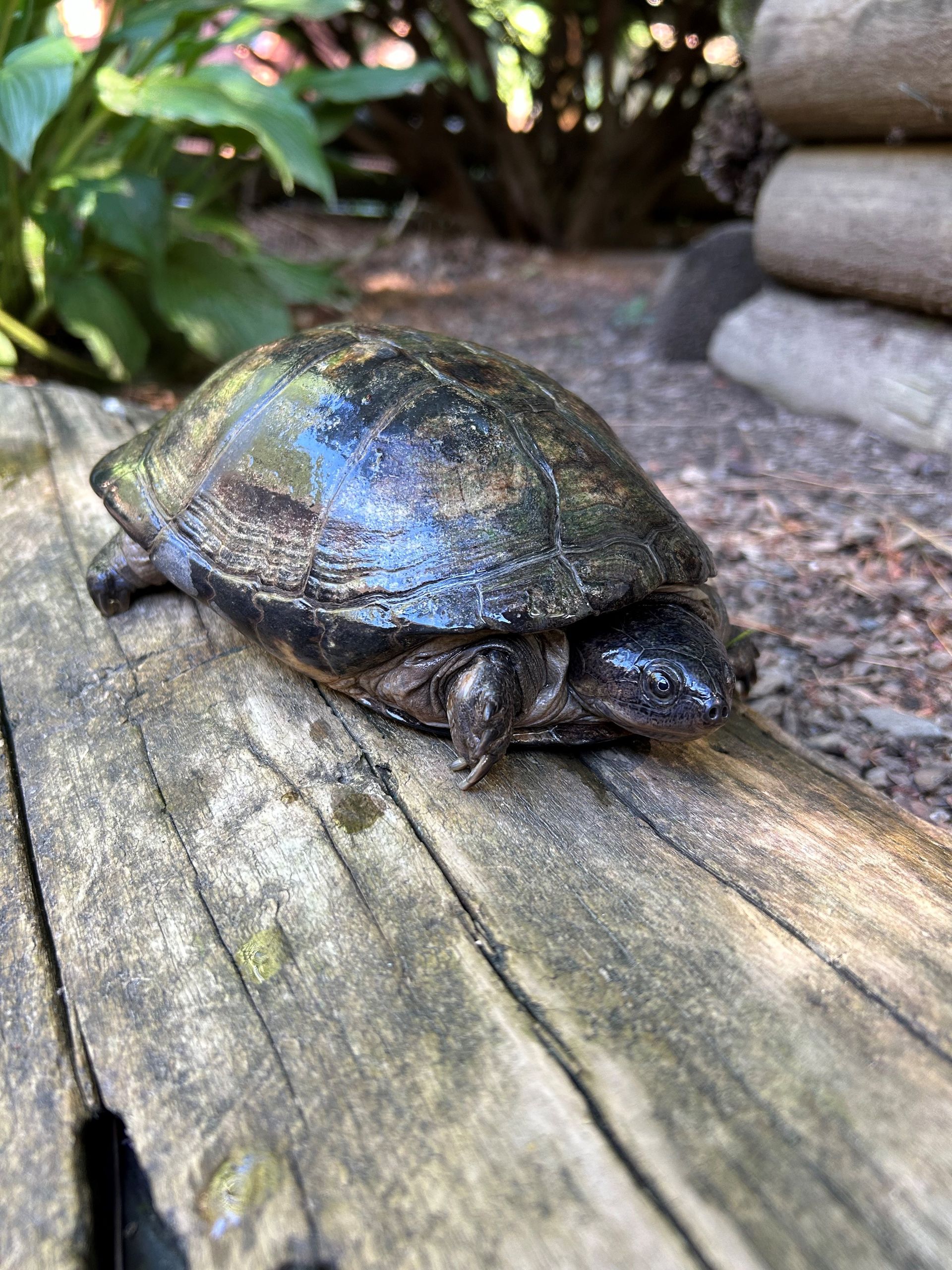Black & White Tegu
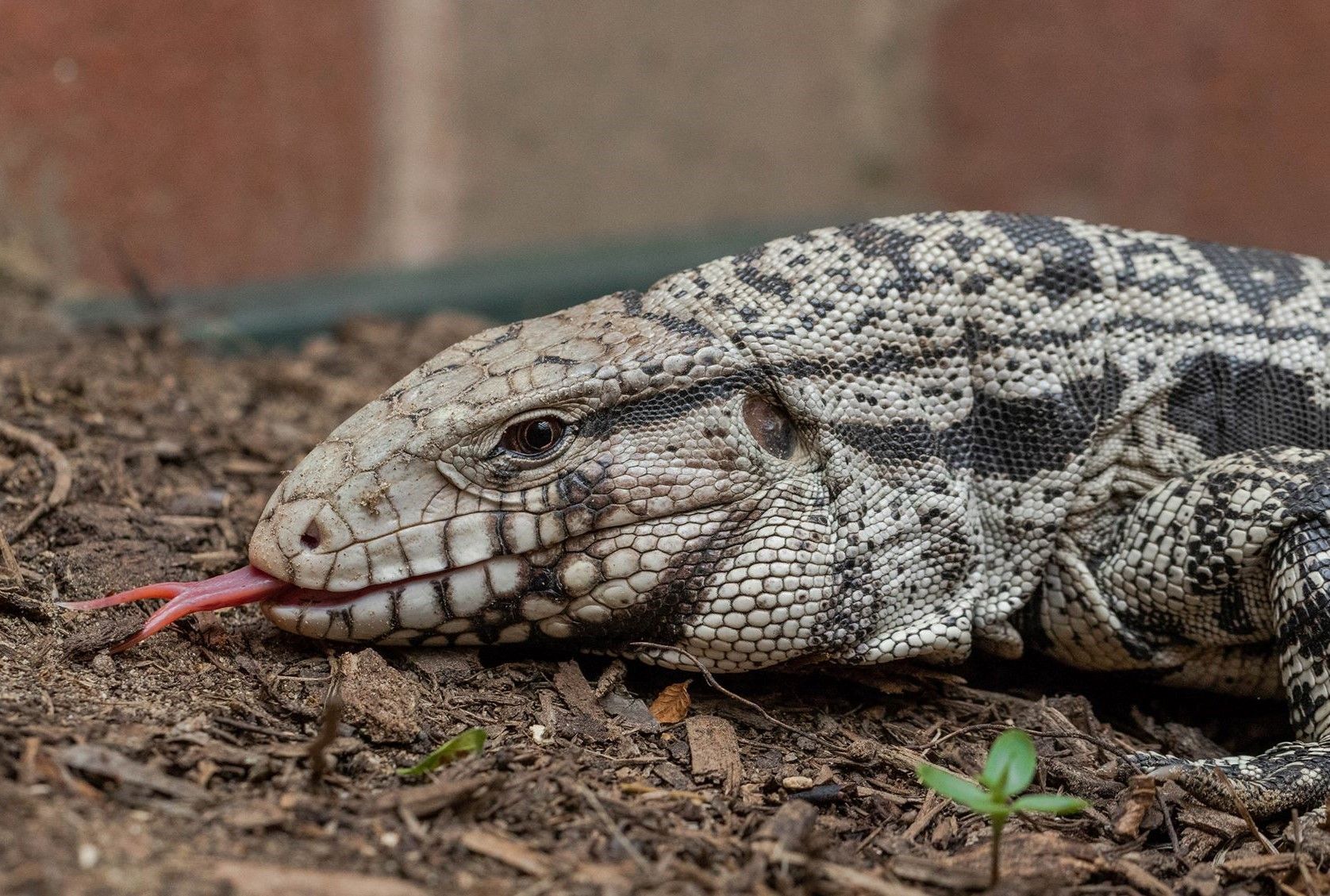
Hades was discovered in a vacant apartment after his initial owners had abandoned him upon moving out. He was found by the landlord of the building and brought to his new home at The Zoo in 2016.
Scientific name
Salvator merianae
Lifespan
15-20 years
Range
Black and white tegus live in tropical rainforests, savannas, and deserts of Eastern and central South America.
Diet
Tegus are omivorous and have a wide-ranging diet. They will eat fruits, vegetables, eggs, small birds, small mammals, and small reptiles.
Social Structure
In the wild, males and females leave and follow scent trails in order to find a mate. Their main defense mechanism against threats is biting, and they will defend themselves against predators or other tegus when resources are scarce.
Conservation Status
Threats in the Wild
The wild population of the black and white tegu is stable. Minor threats to their survival are hunting for their skins and the pet trade.
share this page


